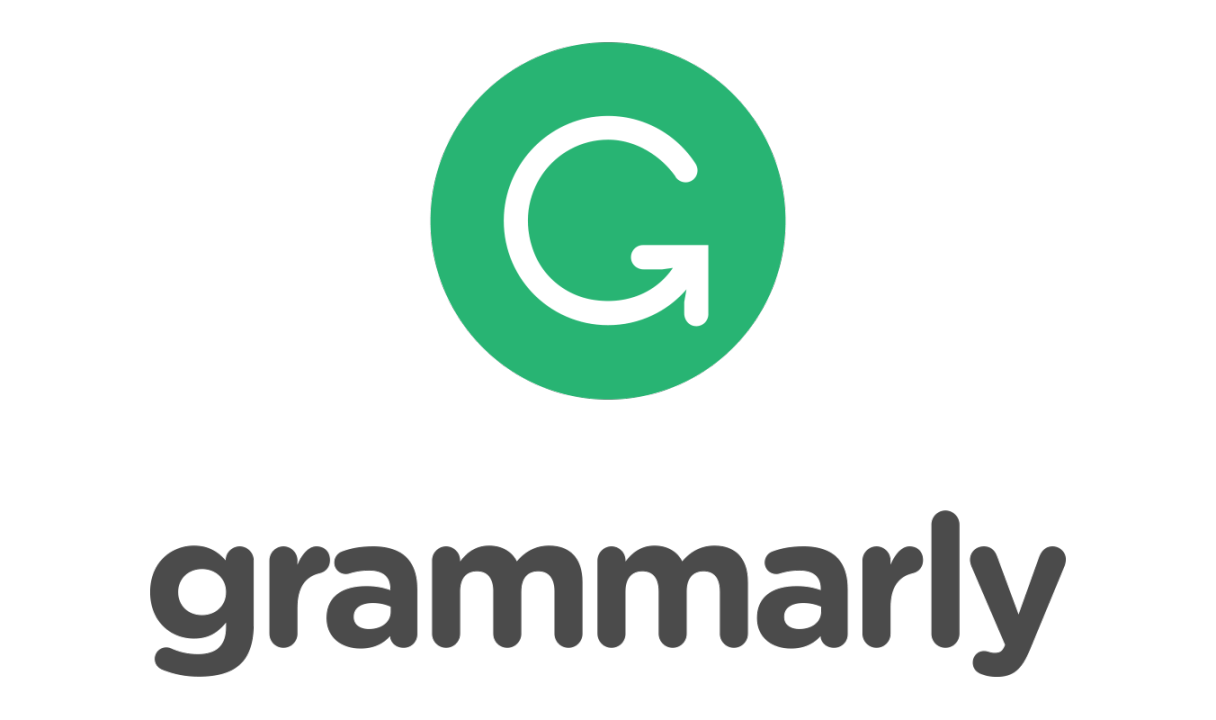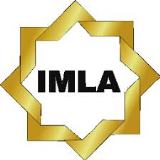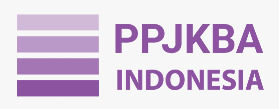The Relationship Between Active Teaching Methods, Student Engagement, and the Implementation of the Arabic Language Curriculum in Higher Education
DOI:
https://doi.org/10.22515/athla.v5i2.10171Keywords:
Keywords: Active Teaching Methods, Implementation Success, Student EngagementAbstract
This study aims to analyze: (1) whether there is a relationship between active teaching methods and student engagement, (2) whether the success of curriculum implementation is related to student engagement, and (3) whether active teaching methods and the success of curriculum implementation together have a significant relationship with student engagement. This research employs a quantitative approach with a correlational method. The study sample consists of 100 students from the PBA postgraduate program at UIN Maulana Malik Ibrahim Malang in the 2023-2024 academic year, selected using a saturated sampling technique. The research instrument is a closed-ended questionnaire. Data analysis was conducted using Pearson Product Moment tests for the first and second hypotheses and multiple correlation tests for the third hypothesis. The analysis results indicate: (1) there is a moderately strong relationship between active teaching methods and student engagement with a correlation value of 0.364, (2) there is a moderately strong relationship between the success of implementation and student engagement, with a correlation value of 0.573, and (3) there is a strong relationship between active teaching methods and the success of implementation jointly with student engagement, with a correlation value of 0.599. By demonstrating the relationship between active teaching methods and the successful implementation of the Arabic language curriculum, the findings of this study can serve as a foundation for designing educational policies that promote the adoption of interactive teaching methods across various educational levels.
Downloads
References
Abouhashem, A., Rana M.A., Jolly B., Malavika S., Zubair A., & Noora J., A., (2021). “A Distinctive Method of Online Interactive Learning in Stem Education.” Sustainability (Switzerland) 13 (24): 1–17. https://doi.org/10.3390/su132413909.
Ahmed, Alsubhi et al. (2023). “Cooperative Learning, Method, Strategy, and Its Importance in Language Learning: Arabic Language as a Model.” International Journal of Academic Research in Business and Social Sciences 13 (12). https://doi.org/10.6007/ijarbss/v13-i12/19932.
Aini, Q., & Bayu K. (2024). “Evaluasi Kurikulum Merdeka Dalam Pembelajaran Bahasa Arab.” Bara Aji: Jurnal Keilmuan Bahasa Arab Dan Pengajarannya 1 (2): 28–40. https://ejournal.unib.ac.id/semiba/article/view/13357/6512.
Anggraena. (2021). “Kurikulum Untuk Pemulihan Pembelajaran.” Pusat Kurikulum Dan Pembelajaran, 130.
Arsyad, M. Husni. (2019). “Metode-Metode Pembelajaran Bahasa Arab Berdasarkan Pendekatan Komunikatif Untuk Meningkatkan Kecakapan Berbahasa.” Shaut Al Arabiyyah 7 (1): 13. https://doi.org/10.24252/saa.v1i1.8269.
Asmawati et al. (2020). “Active Learning Strategies Implementation in Arabic Teaching at Senior High School.” International Journal of Contemporary Islamic Education 2 (1): 1–20. https://doi.org/10.24239/ijcied.vol2.iss1.10.
Bacon, C.M., Mulvaney, T.B. D., Ball, E. Melanie DuPuis, S.R. Gliessman, R.D. Lipschutz, & A. Shakouri. (2011). “‘The Creation of an Integrated Sustainability Curriculum and Student Praxis Projects.’” International Journal of Sustainability in Higher Education 12: 193–208. https://doi.org/https://doi.org/10.1108/14676371111118237.
Briliandy, Naufal Rafi & Inayati, Nurul Latifatul. (2024). “Active Learning Methods to Improve the Arabic Language Skills of Pesma Students” 11 (2): 193–98.
Dewi Ayu W.,W. (2023). “PROBLEM BASED LEARNING: MEMBUKA PELUANG KOLABORASI DAN PENGEMBANGAN SKILL SISWA.” Jurnal Penelitian Dan Penjaminan Mutu 13 (1): 104–16.
Fauziyah, Naila, & Muhammad Y., M., E. (2024). “STRATEGI PEMBELAJARAN EFEKTIF DALAM MENINGKATKAN KEAKTIFAN SISWA DI SD BAHREISY SURABAYA.” Golden Age and Inclusive Education 15 (1): 37–48. https://doi.org/https://doi.org/10.61798/galon.v1i2.124.
Fitria & Abidin, Munirul. (2023). “The Implementation of Project-Based Learning to Improve Students’ Participation and Interaction in Learning Arabic Language: A Focus on Writing Skills” 9 (September): 196–206. https://doi.org/10.55849/attasyrih.v9i2.175.
Fusic, S. J., N., A., & Thangavel, M. (2020). “A Case Study on Improving Learner Engagement by Incorporating ICT Tool Usage and Active Learning Strategies in Engineering Courses.” IGI Global Scientific Publishing, 224–46. https://doi.org/https://doi.org/10.4018/978-1-7998-2245-5.ch011.
Hariyadi, Misnawati, & Yusrizal. (2019). MEWUJUDKAN KEMANDIRIAN BELAJAR : MERDEKA BELAJAR SEBAGAI KUNCI SUKSES MAHASISWA JARAK JAUH. Sustainability (Switzerland). Vol. 11.
Haryas, H., Harja S., & Diana N. (2024). “Inovasi Pembelajaran Bahasa Dengan Metode Sugestopedia.” Jurnal Pengabdian Masyarakat 2 (1).
Hermanto, B., & Siful A. (2023). “Pengaruh Metode Student-Centered Learning Dalam Pembelajaran Bahasa Arab.” Bambang Hermanto & Siful Arifin Kariman 11 (2): 265. https://doi.org/https://doi.org/10.52185/kariman.v11i2.340.
Kamalia, K., et al. (2022). “Implementation of Active Learning Strategies In Improving Arabic Language Skills for Students of STAI As-Sunnah Tanjung, North Sumatra.” AL-ISHLAH: Jurnal Pendidikan 14 (2): 1793–1802. https://doi.org/10.35445/alishlah.v14i2.1902.
Kharisma, A., & Gustina S. (2021). “Faktor-Faktor Yang Mempengaruhi Perilaku Konsumen Terhadap Ketentuan Pembelian Sayur Paprika ( Capsicum Annuum L .) ( Studikasus : Supermarket Brastagi Jln . Gatot FACTORS AFFECTING CONSUMER BEHAVIOR ON PURCHASE TERMS PARIS ( CAPSICUM ANNUUM L .) ( CASE S,” 1–13.
Lisnawati, L., Septi K., & Muhammad A., H. (2023). “Peran Guru Dalam Penerapan Pembelajaran Berdiferensiasi Untuk Menumbuhkan Minat Belajar Siswa Pada Mata Pelajaran Sosiologi.” As-Sabiqun 5 (6): 1677–93. https://doi.org/10.36088/assabiqun.v5i6.4086.
Ma’ruf, M., A. & Lailatul M. (2024). “Analisis Kesalahan Sintaksis Dalam Membaca Teks Arab Pada Siswa Serta Alternatif Peningkatan Kualitas Pembelajaran Bahasa Arab Di Sekolah.” Al-Lahjah : Jurnal Pendidikan, Bahasa Arab, Dan Kajian Linguistik Arab 7 (2): 794–803. https://doi.org/10.32764/lahjah.v7i2.4902.
Maghfirotunnisa, A. dkk. (2023). “Validitas Isi Dan Reliabilitas Instrumen Penilaian Harian Mata Pelajaran Bahasa Arab MI Manarul Islam Malang.” Shaut Al Arabiyyah 11 (1): 19–28. https://doi.org/10.24252/saa.v11i1.34368.
Masturoh, F., & Ihwan M. (2023). “Implementasi Kurikulum Merdeka Belajar Dalam Pembelajaran Bahasa Arab.” Kalamuna: Jurnal Pendidikan Bahasa Arab Dan Kebahasaaraban 4 (2): 207–32. https://doi.org/10.52593/klm.04.2.07.
Mohd Rushdi et al. (2023). “Higher Education Students’ Engagement and Factors That Constrain Students’ Activeness in Learning Arabic Language.” International Journal of Academic Research in Progressive Education and Development 12 (2): 1609–21. https://doi.org/10.6007/ijarped/v12-i2/17265.
Khadafie, M. (2023). “PENDIDIKAN AGAMA ISLAM DALAM SISTEMPENDIDIKAN MERDEKA BELAJAR.” TAJDID: Jurnal Pemikiran Keislaman Dan Kemanusiaan, 72–83. https://doi.org/https://doi.org/10.52266/tadjid.v7i1.1757.
Muarif, J., A., Fadhil A., J., Muhammad I., A., & Dede I, S. (2023). “Hubungan Perkembangan Teknologi Ai Terhadap Pembelajaran Mahasiswa.” Jurnal Pendidikan IPS 4 (2): 53–60. http://jurnal.anfa.co.id/.
Mufidah, N., S., & Syaifullah. (2024). “Efektifitas Metode Resitasi Terhadap Peningkatan Keaktifan Belajar Bahasa Arab.” Tasyri` : Jurnal Tarbiyah-Syari`ah-Islamiyah 31 (1): 114–24. https://doi.org/10.52166/tasyri.v31i01.563.
Nurdyansah, & Fitriyani T. (2018). “Pengaruh Strategi Pembelajaran Aktif Terhadap Hasil Belajar Madrasah Ibtiaiyah.” Jurnal Pendidikan Islam 3 (1): 929–30. http://eprints.umsida.ac.id/1610.
Parihin. (2023). “Penggunaan Metode Permainan Dalam Pembelajaran Bahasa Arab Untuk Meningkatkan Motivasi Dan Partisipasi Siswa Kelas XI MQNH Putri.” Jurnal Matluba: Jurnal Pendidikan Bahasa Dan Sastra Arab 1 (2): 136–50.
Patonah, I., Mutiara S., & Salma M., A. (2023). “Pendekatan Penelitian Pendidikan: Penelitian Kualitatif, Kuantitatif Dan Kombinasi (Mix Method).” Pendas : Jurnal Ilmiah Pendidikan Dasar 8 (1989): 5378–92. https://doi.org/https://doi.org/10.23969/jp.v8i3.11671.
Phillipson, A., Annie R., & Andy B., L. (2018). “Between Knowing and Learning: New Instructors’ Experiences in Active Learning Classrooms.” The Canadian Journal for the Scholarship of Teaching and Learning 9 (1). https://doi.org/10.5206/cjsotl-rcacea.2018.1.4.
Rahmawati, M., M., Nandang S., H, & Azhar, H. (2024). “Model Pembelajaran Project Based Learning Meningkatkan Kemampuan Bicara Bahasa Arab Siswa: Penelitian Eksperimen.” Ukazh: Journal of Arabic Studies 5 (2): 256–71. https://doi.org/10.37274/ukazh.v5i2.980.
Ritonga, D., & Safrida N. (2024). “Implementasi Metode Pembelajaran Aktif Dalam Meningkatkan Keterampilan Berpikir Kritis Siswa Sekolah Dasar.” Education & Learning 4 (1): 38–45. https://doi.org/10.57251/el.v4i1.1292.
Rofiqoh. (2024). “ACTIVE ARABIC LANGUAGE LEARNING STRATEGIES (QIRĀ’AHAND KITĀBAHSKILLS) AT MTS MA’ARIF NU 1 KEMRANJEN.” Al-Ziyadah: Jurnal Pendidikan Islami Vol. 2, No: 1–15. https://ojs.mtsmaarifnu1kemranjen.sch.id/index.php/al-ziyadah/article/view/5.
Rombot, T., Calvin M., Janne T., & Nontje S. (2022). “Hubungan Fasilitas Dengan Prestasi Belajar Mata Kuliah Bidang Studi Semester 1 Pendidikan Teknik Elektro.” JURNAL EDUNITRO Jurnal Pendidikan Teknik Elektro 2 (2): 115–22. https://doi.org/10.53682/edunitro.v2i2.4417.
Saiul, A. (2023). “PEMBELAJARAN BAHASA ARAB BERBASIS KONSTRUKTIVISME DI STAI TARUNA SURABAYA.” Al-Fakkaar: Jurnal Ilmiah Pendidikan Bahasa Arab 2 (2): 100–114. https://doi.org/https://doi.org/10.52166/alf.v2i2.2656.
Seethalakshmi, R., K. Navaneethakrishnan, K.N. Rekha, & G.P.K. Wundavalli. (2024). “‘Integration of Experiential Learning and Conversational Framework in Curriculum Development – Role of 4C’s and Student Engagement in Rural Management Education.’” Journal of International Education in Business Vol. ahead. https://doi.org/https://doi.org/10.1108/JIEB-06-2023-0038.
Shen, J., Hongyan Q., Ruhuan M., & Cencen S. (2024). “A Comparative Study on the Effectiveness of Online and in-Class Team-Based Learning on Student Performance and Perceptions in Virtual Simulation Experiments.” BMC Medical Education 24 (1): 1–9. https://doi.org/10.1186/s12909-024-05080-3.
Zein, M. (2024). “Metode Pembelajaran Pendidikan Islam Yang Efektif: Studi Empiris Di Sekolah Menengah Muhammad Zein IAIN Ternate, Maluku Utara.” Jurnal Ilmiah Wahana Pendidikan 10 (12): 1073–82.
Downloads
Published
How to Cite
Issue
Section
Citation Check
License
Copyright (c) 2024 Ulfi Amelia, Munirul Abidin, Silvia Rahma Yanti, Dwi Putri Agustia

This work is licensed under a Creative Commons Attribution-ShareAlike 4.0 International License.










